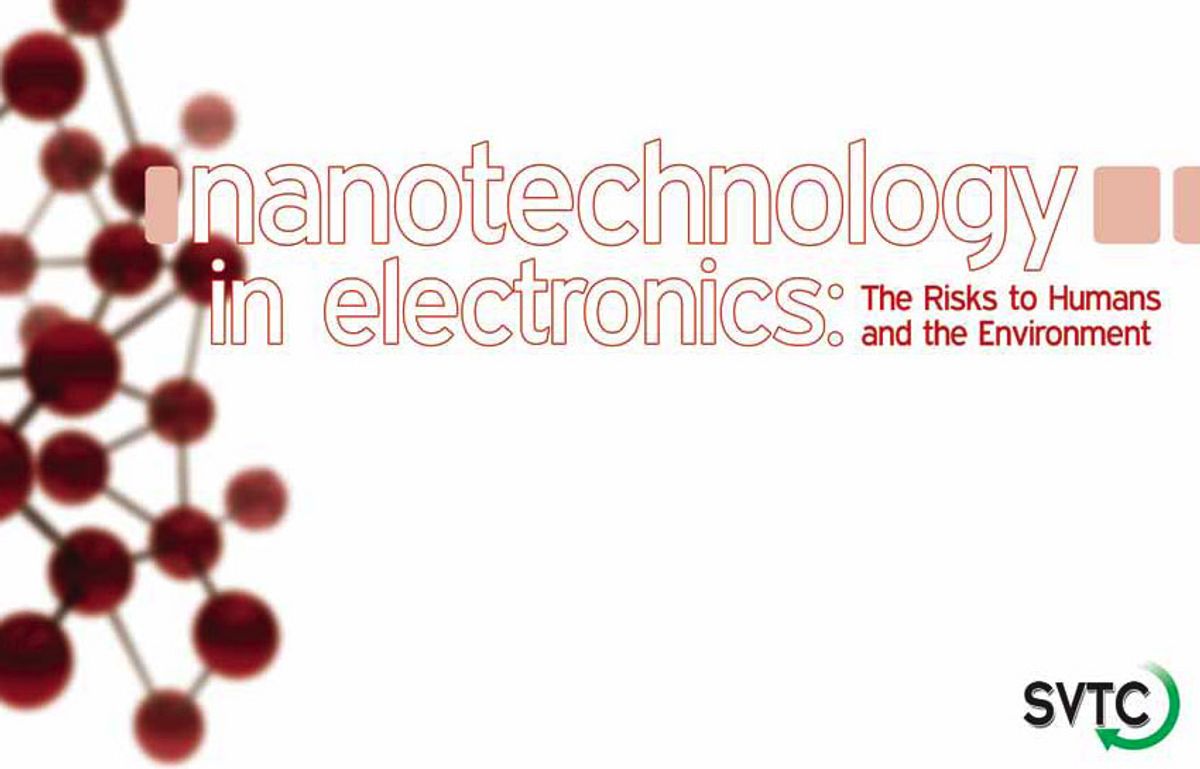I have encountered both hopeless ideologues and blinded cheerleaders on either side of the nanotechnology and toxicity debate, and in my experience it is the environmentalists who are just unreachable.
Like Pavlovian Dogs, they see the term “nanotechnology” and bark back “What about the environment?”. They don’t really discern between microscopy tools and nanoparticles, never mind delineate among the vast amount of different nanoparticles. They just know that nanotechnology is untested and being foisted upon them as unsuspecting consumers by some evil industry.
At least with the nanotech cheerleaders you can temper their enthusiasm if you explain the situation a little bit. After all greed has as its close relative fear, but ideology’s closest kin is ignorance. There is a little you can do to overcome that, certainly the force of argument doesn’t help.
In both observing this debate and covering the issue, I have not come across any organization that has presented more faulty thinking on the subject than the Silicon Valley Toxics Coalition (SVTC).
Let’s take a look at it. It starts out with a definition of nanotechnology in the first sentence that is not too bad as these definitions go. But in the next sentence manages to confuse the concept of molecular nanotechnology with the nanomaterials variety that they are no doubt railing against. This is just an introduction to the confused thinking we find further.
For instance, in the second page we are provided a glossary. At the top of the list, I guess because the list is alphabetical, are “brominated flame retardants” (BFRs). Okay, but why? What does this have to with nanotechnology or nanoparticles? In fact, if anything, it demonstrates why we should hardly be concerned about nanoparticles in electronics when 2.5 million tons of BFRs are used annually in polymers.
After presenting BFRs and explaining they have been shown to be detrimental to both human and environmental health, we are given “engineered nanoparrticles” next in the glossary. A somewhat facile definition is provided “ENPs are so small they cannot be seen with a regular light microscope” but no detrimental effects are attributed to them, except, of course, that it is listed right under BFRs. Guilt by association? I am beginning to lean towards deliberate misrepresentation.
On the same page, we get the question “How Small is Small?” (Poorly informed pieces such as these spend a lot of time providing definitions, no doubt because of the author’s need for them). And for the first time, we get the term that is supposed to connote the Evil Empire: The Nanotechnology Industry. I challenge anyone, including misguided environmentalists, to tell me what the nanotechnology industry is, or is supposed to be.
Of course, having a monolithic nanotechnology industry planning to do us harm for profit is a lot more satisfying and can produce amusing banners that say stuff like this: “Nano, it’s not green, it’s totalitarian”. Sigh.
Next in the SVTC report we get the questions of why nanoparticles are important and why they would be used in electronics. The answers are more or less accurate, but it’s not clear why the use of nano lithium iron oxide in rechargeable batteries is presented so ominously when it is explained that they may replace conventional batteries in laptops and cell phones.
Are conventional batteries, filled as they are with all sorts of toxic materials, any less of a threat? Or maybe the SVTC wants to eliminate laptops and cell phones all together? I ask this because when I recently suggested that nanotech research might eliminate the need for batteries in cell phones, I was met with the Pavlovian response: What about the environment?
Just as a note to the SVTC the next time you put one of these together you should know that a majority of today’s Li-ion batteries already use nanofibers.
Finally, by the fifth page we get an answer to the question: How is nanotechnology used in electronics? And who is their source for an answer to this question: The Project on Emerging Technology (PET). Now I almost feel sorry for the SVTC, bad data in bad data out.
Since the PET list offers little explanation of their, shall we say, less than rigorous nanotech product list, the SVTC doesn’t present any specific examples of how nanotechnology is used in electronics either. We are just told that it is found in nearly every form of consumer electronics. You can claim that, but can you show it?Just to add insult to injury they present “molecular” electronics. Really? Again, this is just poorly informed. Why add molecular electronics to your list of boogey men unless you had no idea of how it really fit into the universe of nanotechnology and electronics. I am leaning back towards not knowing or understanding.
Look, I am in favor of the most rigorous research into determining the risks of nanoparticles in electronics and a host of other applications and products. But if I may take the exhortation at the end of this report and turn it around it somewhat: Be an informed environmentalist.
Dexter Johnson is a contributing editor at IEEE Spectrum, with a focus on nanotechnology.




